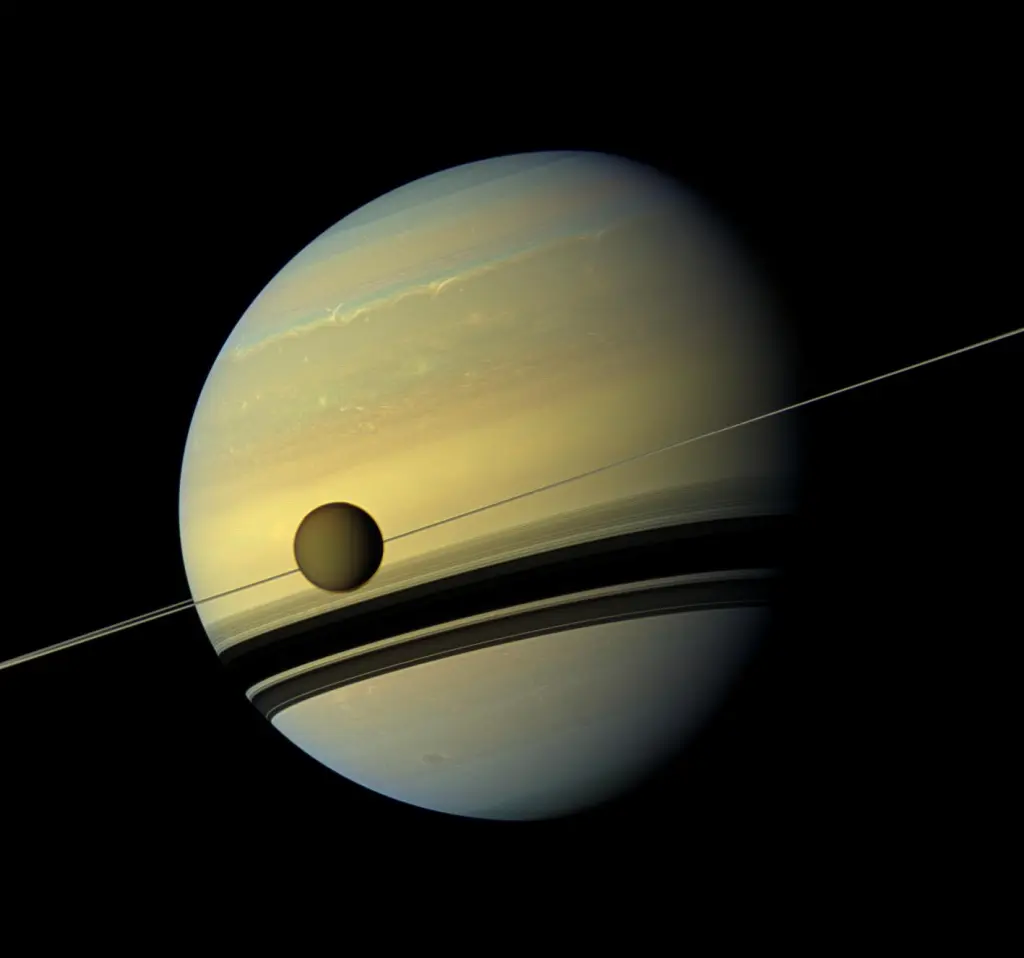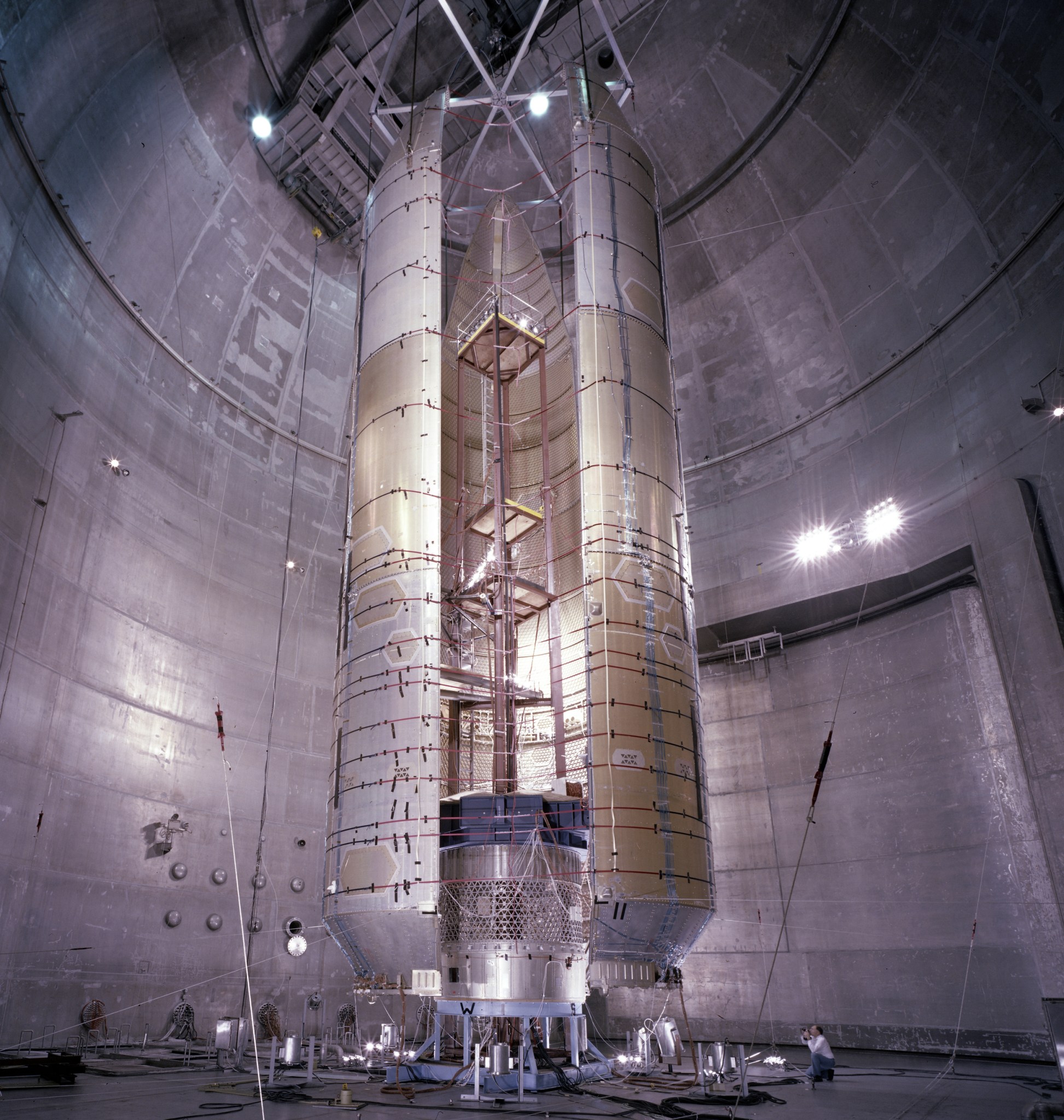Cassini Mission: 5 Things to Know About NASA Lewis’ Last Launch
NASA’s ambitious Cassini mission to Saturn in the late 1990s was one of the agency’s greatest accomplishments, providing unprecedented revelations about the esoteric outer planet and its moons. The complex undertaking was also a tremendous, yet bittersweet, achievement for the Lewis Research Center (today, NASA’s Glenn Research Center in Cleveland), which oversaw the rockets that […]

6 min read
Preparations for Next Moonwalk Simulations Underway (and Underwater)
NASA’s ambitious Cassini mission to Saturn in the late 1990s was one of the agency’s greatest accomplishments, providing unprecedented revelations about the esoteric outer planet and its moons. The complex undertaking was also a tremendous, yet bittersweet, achievement for the Lewis Research Center (today, NASA’s Glenn Research Center in Cleveland), which oversaw the rockets that propelled Cassini to Saturn. Cassini brought a close to over 35 years of Lewis’ management of NASA’s launch vehicles.
Cassini Mission: 5 Things to Know About NASA Lewis’ Last Launch
1. NASA Lewis Launched the Largest and Most Complex Deep-Space Mission to Date
In the early 1980s, NASA began planning the first-ever in-depth study of the planet Saturn. The mission would use the Cassini orbiter designed by NASA’s Jet Propulsion Laboratory in Southern California and the European Space Agency’s Huygens lander. It was one of the heaviest and most complex interplanetary spacecraft ever assembled. Cassini’s plutonium power system and intricate flight path further complicated the mission.
NASA Lewis was responsible for managing the launches of government missions involving the Centaur upper stage and the Atlas and Titan boosters. Cassini’s 6-ton payload forced Lewis to use the U.S. Air Force’s three-stage Titan IV, the most powerful vehicle available, and pair it with the most advanced version of the Centaur, referred to as G-prime.
2. Lewis Performed Hardware Testing for the Cassini Launch
One of NASA Lewis’ primary launch responsibilities was integrating the payload and upper stages with the booster. This involved balancing weight requirements, providing adequate insulation for Centaur’s cryogenic propellants, determining correct firing times for the stages, and ensuring that that the large shroud, which encapsulated both the upper stage and payload, jettisoned cleanly after launch.
By the time of Cassini, the center had been testing shrouds (including the Titan III fairing) in simulated space conditions for over 25 years. NASA’s Space Power Facility possesses the world’s largest vacuum chamber and was large enough to accommodate the Titan IV’s 86-foot-tall, 16-foot-diameter fairing. In the fall of 1990, the shroud was installed in the chamber, loaded with weights that simulated the payload, and subjected to atmospheric pressures found at an altitude of 72 miles.
The system was successfully separated in less than half a second. Using simulated Cassini and Centaur vehicles, NASA engineers also redesigned a thicker thermal blanket that would protect Cassini’s power system from acoustic vibrations during liftoff.
3. Lewis Personnel Assisted with the Launch
In late August 1997, a group of NASA Lewis engineers traveled to NASA’s Kennedy Space Center in Florida to make final preparations for the Cassini launch, working with Air Force range safety personnel at Patrick Air Force Base to ensure a safe launch under all circumstances.
After an aborted launch two days earlier, the vehicle was readied for another attempt in the evening of October 14. Lewis personnel took stations in the Launch Vehicle Data Center inside Hangar AE to monitor the launch vehicle’s temperature, pressure, speed, trajectory, and vibration during the launch. The weather was mild, and the countdown proceeded into the morning hours of October 15 without any major issues.
At 4:43 a.m. EDT, Titan’s first stage and the two massive solid rocket motors roared to life, and the vehicle rose into the dark skies over Florida. The Lewis launch team monitored the flight as the vehicle exited Earth’s atmosphere, Titan burned through its stages, and Centaur sent Cassini out of Earth orbit and on its 2-billion-mile journey to Saturn. After a successful spacecraft separation, Lewis’ responsibilities were complete. The launch had gone exceedingly well.
4. Cassini-Huygens Brought a Close to Decades of Lewis Launch Operations
Cassini-Huygens was NASA Lewis’ 119th and final launch, and it brought to a close the center’s decades of launch operations. The center had been responsible for NASA’s upper-stage vehicles since the fall of 1962. The primary stages were the Agena, which had 28 successful launches, and Centaur, which has an even more impressive track record and remains in service today.
While Lewis continued to handle vehicle integration and other technical issues for launches of NASA payloads, in the 1980s, NASA began transferring launch responsibilities to commercial entities. In the mid-1990s, NASA underwent a major realignment that consolidated all launch vehicle responsibilities at NASA Kennedy.
So it was with mixed emotions that around 20 Lewis employees and retirees gathered at the Cleveland center in the early morning hours of Oct. 15, 1997, to watch the Cassini launch. The group held its cheers for 40 minutes after liftoff until Lewis’ responsibilities concluded for the last time with the safe separation of Cassini from Centaur. “In many ways, this is the end of an era, across the agency and, in particular, here at Lewis,” noted one engineer from the Launch Vehicle and Transportation Office.
5. Cassini Made Groundbreaking Discoveries That Inform Today’s NASA Missions
Cassini’s seven-year voyage to Saturn included flybys of Venus (twice), Earth, and Jupiter so that the planets’ gravitational forces could accelerate the spacecraft. Cassini entered Saturn’s orbit in June 2004 and began relaying data and nearly half a million images back to Earth. Huygens separated from the spacecraft and descended to the surface of the Saturn’s largest moon, Titan, in January 2005. It was the first time a vehicle ever landed on a celestial body in the outer solar system.
Cassini went on to make plunges into the planet’s upper atmosphere and through Saturn’s rings. Scientific information on the mysterious planet, its moons, and rings led to the publication of nearly 4,000 technical papers. After over 13 years and nearly 300 orbits, on Sept. 15, 2017, NASA intentionally sent Cassini plummeting into the atmosphere where it burned up, ending its remarkable mission.
NASA engineers used their experiences from the Cassini mission to help design the Europa Clipper, which is intended to perform flybys of Jupiter’s moon Europa. Europa Clipper launched on Oct. 14.
Keep Exploring
- Read the “Sending Cassini to Saturn” Series from NASA Glenn
- Visit NASA’s Cassini-Huygens Website
- Visit the European Space Agency’s Cassini-Huygens Website
- Watch NASA Coverage of the Cassini Launch
- See NASA Glenn’s Historic Centaur Rocket Display
What's Your Reaction?

















































